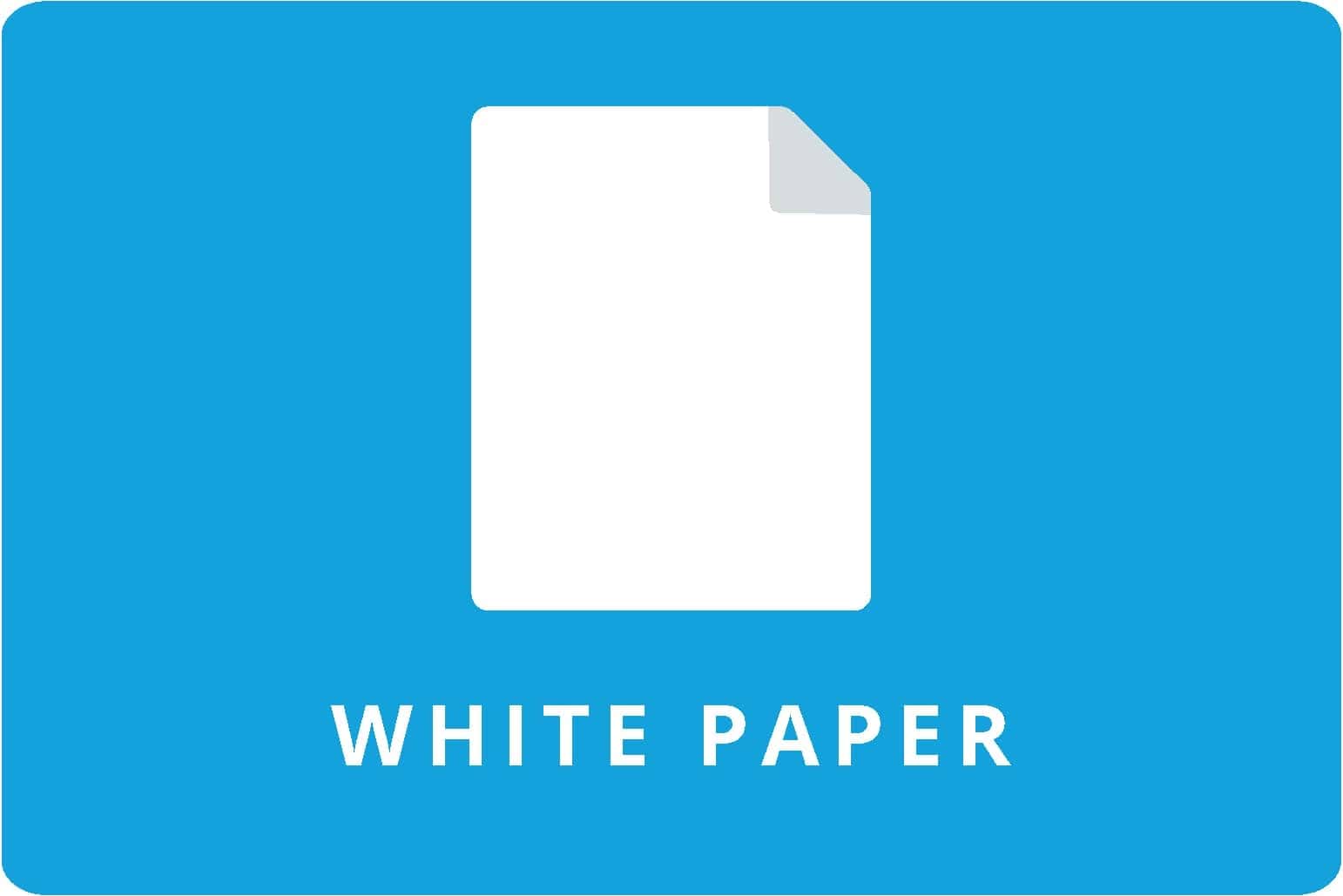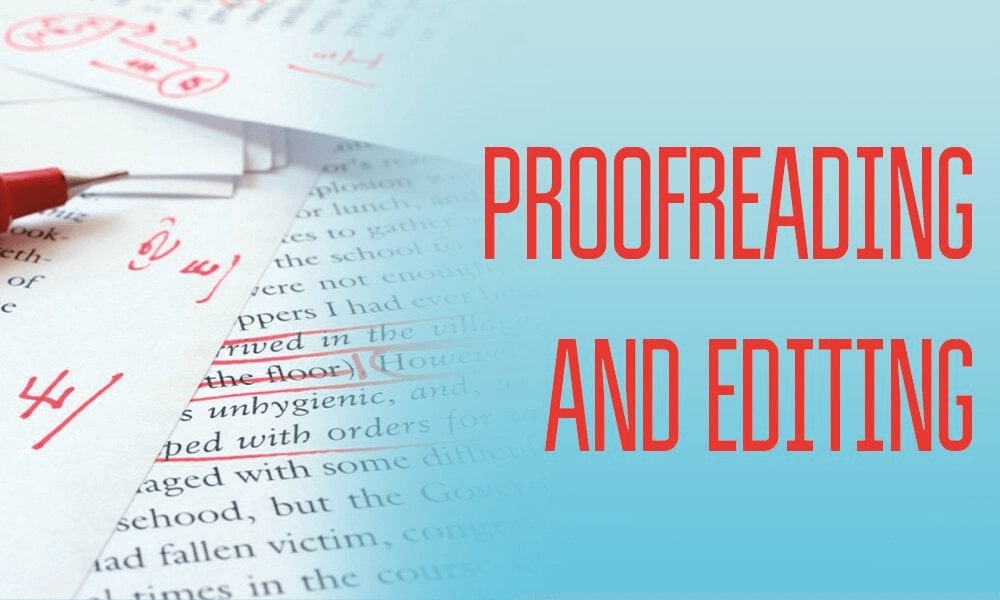How to Write a White Paper? 9 Tips & Examples
Have you ever heard about the term white paper? If yes, then you should invest more time researching this type of document to increase sales.
To have a white paper published, it is not a matter of hours. It requires a lot more time and hard work than you might think, but please don’t worry, by revealing some useful tips, we will help you in creating a perfect white paper that resonates with your business.
Related posts
- 15 Persuasive Writing Techniques to Increase Conversion
- What is a Splash Page?
- The 5 W’s & the H in content marketing
- How to Write a Good Product Description that Sell?
What exactly is a white paper?

A white paper is a document arguing for a particular position or addressing the problem for its audience. Although serving as official government documents, all types of businesses, brands, and nonprofits use them to create topical authority.
The aim of a white paper is usually to propose that such a position is the most ideal way to go, or that a given solution is the most appropriate for a specific problem. If used for commercial purposes, it may affect current and potential customers’ decision-making processes.
Why are white papers important?
White papers are written by companies to record expertise and to market themselves. In general, white papers are written for an audience outside the company. Thus, by providing top-quality, industry expertise, they are a weapon to draw readers to the business.
A white paper, however, isn’t a marketing strategy. By showcasing the internal expertise and helpful information, it markets its products, but not by competing for business.
Still confused, right? Let’s take this one as an example. A sales pitch is something like: 9 Easy Ways To Make Money Online With ABC in 2021, on the other hand, a white paper is rather: ABC-Chances and Challenges for Merchants.
The number of pages varies from several pages to 100 pages, or even more, based on the topic and its complexity. In addition to having text, white papers also consist of hard stats, graphs, charts, and links to verify the arguments you are proposing.
Someone rarely purchases an item when they land on a website for the first time. First, they have to do some research, make a comparison, and analyze their options.
It is estimated that among first-time website visitors, only 2-3 percent of whom convert to sales. For heavy, expensive products and services, the proportion is even lower. It implies that the rest of your website traffic is all but placing an order, in other words, all your attempts to attract visitor traffic all lead to a high bounce rate. Meanwhile, the rate of the people who did convert only became leads.
But now, white papers are to the rescue by increasing your website conversion rates.
They can help develop your brand and help you to become a thought-leader in your field. With white papers, you can establish your credibility and reach out to other partners who can expedite the scaling process of your business.
Furthermore, the use of a white paper offers you at least an email address, hence, you can begin personally contact new leads. Also, your website visitors may find your content interesting and share it on social media. And your site can draw more attention and links, thus, your site’s organic traffic will increase.
How to write a white paper?
Step 1: Make the perfect hook to tempt people into signing up

Almost every B2B website has the same call to action: “Get a Free Consultation!” It may sound tempting, but free consultations typically fail to deliver the intended result and resolve the pain point of your prospect. They only offer the sales team of your business an opportunity to speak idly.
The hook of your white paper, on the other hand, is the unique spin or point of view you are about to give that topic.
Let’s take the example of Invisalign- the process of wearing a series of clear, removable aligners that gradually straighten your teeth: “How Invisalign can improve your smile without the hassle of traditional braces.”
It is a great hook as it addresses the pain point of potential customers. They want an orthodontist to correct their smile without having to be concerned about the time, hassle, pain level, etc.
Besides, it overcomes objections by positioning itself against traditional braces, and thus, they can make it a must-try and must-have option. Also, it provides value to help guide the potential patient on their future actions.
Step 2: Pull together the information

After you have determined the topic and hook, you can begin pulling information together. Based on your business’s type and size, the amount of research may vary. You can simply interview a topic expert as they have a great deal of knowledge about the industry or product. However, the general public may not understand their technical writing.
Hence, first thing first, you should jot their insights down on paper or in a recording. To upload the file and get a transcription back within 24 hours, you can check out a useful tool like scribie.
Another option is to go to Amazon and scan through book reviews. By doing this, you can get interesting insights or language that people would use.
Then, prepare a few headlines to recognize which perform best. After that, you can use all of the research gathered to find out what major topics you plan to fill out your chapters.
Next, the preparation of a simple outline is required. You can use Google Docs to send it to other people and get feedback on which aspects should be added or eliminated.
Now, provide more information about the outline. Typically, it is the most time consuming to source images and graphics, hence, be sure to organize them before writing even a single word.
Then, maybe the most tedious part, you can simply ‘fill in’ the content around the images by providing each one’s description and its connection to the next one.
Step 3: Design and format

Your job now is to bring the content from your rough document and format it in design software. Use Adobe InDesign for your white paper to make it more reliable and make a first good impression on people. You can also use tools like this free ebook converter to generate different reading formats.
Formatting your white paper is a must as images are likely to spoil the text content’s layout in your document. They produce large, nasty breaks that push the rest of the page content down to the next one or result in clutter as it is squeezed onto an already full page.
Your final product will be much better if a designer re-work the content for you. Your design’s level of sophistication does not necessarily have to be high. Attractive typography and a little color can make a significant impact.
While formatting your white paper, you should take into consideration your text and column layout. A single-column design is ideal and easy to read for any user’s device. Other businesses might prefer two-column designs that produce a professional look, like a magazine or a book. For example, our avada.io resources follow a two-column design.

Step 4: Create multiple opt-ins to generate new leads

To create opt-ins on your site, the first thing you must have is a simple landing page which includes a simple form field or two, an image of what your prospects will get, a strong headline, and a little copy. Also, the white space or the negative space can help focus visitors on the major decision on this page (the form field to opt-in) should be included.
Bear in mind that if you ask for less personal data, you can get more leads. Meanwhile, asking for more information can occasionally get you better leads if more details are required to make sure that the incoming leads are interested in your product/service.
A final test you can run is to use some social component to opt-in, rather than ask for an email address directly. For instance, you can use Pay with a Tweet so that each new opt-in has to send out your pre-crafted message to their friends, family, and colleagues. Alternatively, a social authentication feature might be a good choice.
The next step is to add a few more opt-in forms to the rest of your site. For instance, as you can link the topics in your blog posts, your readers there can be an ideal audience for your new white paper. If a reader is interested in reading about “SEO” on your blog, chances are that they will download a white paper about “SEO.” You can put a simple opt-in at the bottom or middle of your post so that the reader will not miss it while browsing down the page.
You can also use an exit-intent overlay to pop up when someone may be about to leave without giving their email address as a desperate final attempt to gain something from your site guest.
Step 5: Off-site promotion hacks for driving new leads
You will only receive so many opt-ins from your existing website traffic. If your white paper topic and the hook are appealing enough, they can drive traffic back to your site by promoting it on others.
Alternatively, you can ask for reviews so that they can help you promote this new content asset. Of course, “there is no free lunch”, before that, you need to assist them in something or bargain something in exchange. A single review from someone is powerful enough to generate attention to your new free white paper.
Also, do not hesitate to invest your money on ads. If you understand how much each customer is worth (or at least the average order value), you can determine each lead’s value. You can know how much you can spend to get a new email address for a white paper download. Maybe, the starting point is only 1 dollar or two for an email you get, but it is fine. Start scale growth now!
Some tips to write a white paper that actually increases sales
1. Consider Your Overall Content Marketing Strategy

Be sure that the result resonates with the content marketing strategy when making a white paper. White papers are written with clear goals in mind and are intended to help you develop thought leadership. You will also have remedies to the target audience’s pain points, simultaneously.
Converting prospects through a white paper would be simpler if the content meets the needs of consumers at a given point in the shopping journey. Additionally, writing white papers that concentrate on a specific area regularly will help you gain control of search engine related terms.
2. Do Not Compromise on Its Promotion

It may take a while to generate white papers, which is why many businesses would be excited to show their work as soon as they are ready without properly promoting it. This can be an incredible mistake. It is also necessary to invest in a comparable time and effort to promote it.
You should split up the material into small, comprehensible parts while promoting your white paper thus your readers can find it easy to follow. It would draw more traffic, too. Turn the in-house digital marketing team into practice, or partner with outside companies to use available promotional tools such as social media, email, newsletters, search engine marketing, etc to increase the number of readers mentioning about your paper.
3. Maintain Quality and Professionalism

Experts are expected to write a white paper and presenting it with a casual tone is a total no-no if you would like it to be impactful. It’s wiser to follow academic writing methods and be descriptive of the topic you are talking about. It is a long document as a white paper is descriptive. Take this chance to show your perspective.
Adobe offers a 15-page whitepaper for business professionals searching for an expert and detailed information on document security. The so-called “Global Insights on Document Security” white paper provides information on what an IT professional should know about when it comes to deciding on their business’s document and file security practices.
4. Choose an Interesting Topic and Title

One of the primary factors enticing (or repelling) your readers into your white paper is the topic or the title.
Pardot’s White Papers are notable in this regard. Their topics and titles are succinctly and self-explanatory enough to tell readers what to expect from the reading. For instance, their title “The Marketing Automation Success Kit” explicitly portrays that the white paper includes everything they need to learn about marketing automation, and they don’t need to refer to any other tools. You should apply an audience-based approach, in this case, think about what they want to read.
It may be challenging to come up with a topic that resonates with the general readers. Identify your target audience and select a topic that may interest them, like a particular issue they may encounter or a detailed review of high-performing businesses in your field.
5. Offer Value

A strong white paper is more about using a compilation of facts to address the concerns of audiences than an advertising tool. To assist your readers you can use a white paper to position yourself as an industry expert with insights. Thus, your paper must have great value to offer. You can do this by flooding them with useful tips and information. Draw attention to the value you have made, and in the future, the audiences will purchase from you.
6. Organize Well

Since a white paper can be up to 10 pages long, in the middle of writing it, it is likely to lose your train of thought. Therefore it’s important to organize your document. It is easier to have a consistent outline in order from the beginning so that paper writing service the paper afterward is convenient. Consistency counts, and it will also help you keep the flow going. The goal is to get the readers ’ attention, deliver value that suits your goals, and motivate them to act on it.
To attract readers, you can create an impressive introduction. Through the guidance of an outline and the list of topics that it includes, you can tell them what they should hope to learn by reading your white paper.
7. Write, Edit, Proofread

Getting an outline available doesn’t mean you’ll have the best white paper finally. You have to place your thoughts in white and black when they are still fresh in your mind. First, emphasis on completing the writing, and then editing.
You will need to proofread the draft as well until it is okay. Ask other people to scan through it, give you feedback, and spot the errors you may have missed during this process. When necessary, read it to yourself aloud to making sure there is no redundancy, repetition, or inappropriate phrases and sentences.
8. Tell Them How It Can Help, Again

It is crucial to ask your readers how your white paper is helpful to them at the beginning of the paper. Yet, it will make a difference if you also reemphasize this at the end. It implies that you do not attempt to sell your product or services in the body of the content. Simply make sure when you conclude it, you add a catch naturally into the paper.
9. Keep Measuring Results

Make sure your white paper produces the results you want and gets enough shares on the desired platforms? To recognize your ROI, check out some content marketing platforms like ClearVoice, Content Launch, Contently, CrowdSource, and many more. They will help you to measure factors like social shares, leads generated and touched, pipeline generated and touched, and revenue created. Use them to your advantage. Figure out what is missing from where, and make the necessary adjustments to optimize your white paper’s scope.
Examples of eye-catching and stunning whitepapers
Create an eye-catching white paper cover page

An appealing cover page is powerful. Like a book’s cover, an eye-catching cover page will tempt people into opening it and read further. At the first peek, your readers should grasp quickly what the white paper will cover. A photo that represents your white paper’s theme or a visual using icons should be included.
Check out this Modern Cyber Security Technology White Paper Template
For instance, this cybersecurity white paper’s cover page highlights its subject – cyber attacks – with a hook icon. The cover also includes a circle motif that is used to give it a clean look in the white paper.
Incorporate photos in your white paper layout which resemble your target users
It is crucial to write a white paper that relates to your readers. Search for people who reflect your target users when you choose images for your white paper. Hence, your target audience will feel relatable to your white paper.
Check out this Employment Engagement White Paper Template, which centers on employee engagement. You can see the two men on the cover, like an enthusiastic leader talking to one of his attentive team members. Hence, any business hoping to motivate their staff will gain some insightful information from this B2B white paper.
Likewise, this impressive template here. It portrays a hard-working person at the office, clicking on her laptop and sipping a cup of coffee at the same time. This portrait would align with virtually every professional marketer you are attempting to reach in a B2B capacity.
Use creative backgrounds for a trendy white paper design
To make your white paper more stand out, you should add a creative background. A simple background pattern design is helpful in that you can add some visual impact to your white paper layout, or even try a stylish color gradient. For example, this Violet Startup Marketing White Paper Template combines a color gradient background, simple pattern designs, and modern geometry.
Experimenting with white paper backgrounds is so easy, hence, do not hesitate to try out different options. The suitable background image can immediately contribute to the cleanness and professionalism of your white paper.
White papers seem to load a great deal of information. But in fact, it won’t take many people time to read the entire cover of paper to cover it.
Try to highlight a few key takeaways that will make them thrilled to read your white paper. Or, you can outline exactly what will be their trade-off for their time.
Take a look at another template: Social Media White Paper Template, there is even an entire section which highlights the key takeaways in the report. As they are on the front page, nobody wants to miss it, which is a lovely addition.
Make your page numbers stand out so your white paper is easy to scan
It’s vital to take your readers into account when creating your White Paper. Care not only about what they want to read but about how they want to read it.
The readers may want to skip ahead to particular sections of your white paper that they find interesting. If they are looking for a specific topic in your white paper, they will appreciate it when you make your page numbers easy to read.
Use a bold font or color block background to make your page numbers stand out. Or, you can use decorative fonts for small accents, which will make a difference. For example, take a peek at this template: Policy White Paper Template Or, this one: Blue Government Healthcare Policy White Paper Template. With a simple format adaptable for any industry, you can easily customize this white paper template. Its simple table of contents and other design elements helps creates a text-centered design.
By adding hyperlinks to individual chapters and sections, you can create a functional table of contents. By doing this, your readers can navigate the content of your white paper easily.
Choose the text you want to turn into a link, then tap on the link icon in the top bar. You can add a URL as well as select pages within the eBook.
Visualize data using charts and pictograms

Marketers and consultants find it challenging to make the data engaging and simple to follow. To resolve this problem, using different charts and pictograms to visualize the data is recommended. The type of charts varies by the type of data you are visualizing.
For instance, a line graph is best to indicate revenue growth over time. Or, to demonstrate parts of a whole, you could use pie charts.
To visualize statistical data, take into consideration using Pictograms, which are another creative and useful way. Take the Dark Cyber Security Technology White Paper as an example, it reveals statistics about different businesses’ annual revenue.
You can also use both bar graphs and pie charts to make it more diverse, check out the Gradient Startup Marketing White Paper Template.
Incorporate your branding into your white paper design

Throughout your marketing efforts, consistent branding is vital as it increases your brand awareness. Make sure your white paper design includes your logo, brand color palettes, and fonts.
Think of new ways to embed your branding. For example, this Red Staff Productivity White Paper Template extends the use of its color signature over regular headers and icons. It adds a clear overlay of color to the images, bringing a punch of color and immediately expanding its palette of brands.
Use high-quality photos with a consistent style

The way your white paper conveys your information is influenced by the use of photos, icons, and illustrations. Avoid using images merely for decoration, use them to communicate relevant concepts, to help the readers to follow your content easily, and to share a mood. Take a look at this Marketing White Paper Template which uses vivid, bright images to engage and attract readers:
Highlight featured quotes using a big font
By using big, bold font, you can highlight insightful quotes and makes them stand out from the rest of the text. The readers will notice the quotes easily, and your page design will get more visual variation. See this HR White Paper Template from this company with a bright orange font to help its featured quotes to be conspicuous.
Use icons to emphasize section headers in your white paper template
To convey information engagingly, when designing your white paper, you should make the text easier to read with visuals. You can guide the eyes of readers to important points by putting an icon next to the text. For instance, this Health White Paper Template is text-heavy, but thank god, the icons steer the readers’ attention to each section header and break up the text.
Check out another example: Vibrant Icon Startup Marketing White Paper Template. The layout of this uses icons to punctuate headers and add a touch of personality to highlight the palette of cordial and vibrant colors.
Use a neutral color scheme for a modern technology white paper design

Minimalistic designs are trendy recently, you should choose a neutral background color like white or light grey. After that, choose similarly elegant color schemes for the visuals. With a cool and muted grey palette, the Technology White Paper Template truly stands out.
To make it more impressive, you can use an accent color to highlight certain parts of your page. Like this Blue Information Technology White Paper Template contrasts a neutral white background with nice corporate blue accents.
Use a visual motif that reflects your white paper topic
A visual motif is a visual element that is repeated throughout your design. For your white paper, your pages should have a seamless look and flow. When selecting a motif for your white paper design, consider some themes displayed in your white paper. If your white paper hopes to achieve social media engagement, for example, then a motif of birds (“tweeting”) or speech bubbles will probably work.
For example, this Human Resources White Paper Template has a leaf motif. Plants signify the theme of growth involved in recruitment:
Alternatively, you can choose a simple shape motif. This approach is more sophisticated, yet still contributes to a white paper design that is well thought out and consistent. Take a look at the following simple yet effective white paper template with a hexagon motif: Simple Information Technology White Paper Template.
Break up chunks of text with visuals
Place your storytelling cap on as you are laying out your white paper pages. Take into account the type of flow, where to use visuals to highlight certain points, and where to illustrate an idea.
Designers should not put too much text into a page. Instead, break up the text and give it space to breathe. It is okay to replace big chunks or your page–or the page in its entirety with images. They provide a rest for the eyes a rest and support the information you want to deliver.
To break up expanses of text while still having the visuals play an important role, visual headers are an ideal option. You can use icons to make illustrations, for example, the Workplace New Technology White Paper Template has funny icons in the headers.
Open your white paper with a boldly colored glossary
For your white paper, you should make a glossary that outlines what your white paper will cover. For example, for the Health White Paper Template, bold color helps to draw attention to the glossary. The readers can easily navigate the content. With a full-page color fill for your glossary, the readers will not miss it while reading through the pages.
Include tables and boxes to emphasize key points and takeaways
Use tables and boxes to section off essential pieces of information. Your readers will be easier to follow your white paper when you break up lengths of text with boxes. For example, in this Health White Paper Template, the designers used a table to organize key points and takeaways from each main section:
Another example of a white paper layout that uses a table to emphasize some important statistics: Tobacco Trade Government Policy White Paper Template.
Include calls to action throughout your white paper

In your white paper, you can add calls to action (CTAs). Say you mention a feature of your product, you can put a clickable CTA button next to it. With this, you can direct people via the sales pipeline, from your white paper to a landing page or blog post. For example, check out the CTA in this Social Media White Paper.
Vary the color, fonts, and styles of your headers
You can create a hierarchy for your headers and sub-headers using a different font or color. That also helps to add more variety to your page design.
They use different fonts and colors for each header-level. This helps to make the differentiation between main headers and subheaders more evident. See this example here: Social Media White Paper.
Dedicate pages to particularly important points
Your white paper will strive primarily to educate readers. But you want to strike a balance between being insightful and having fun too.
When there is a key point to note to readers, you may also want to devote a whole page to that one point and an associated photo to help bring the idea along.
Use such type of pages sparsely as they are impactful to readers. Example of a white paper that includes a resonant quote and image is here.
Examples of striking whitepapers for different industries
For the Insurance Industry
Digital Transformation in the Insurance Industry
This white paper, sponsored by Samsung Electronics America, discusses the trends which form the insurance industry. This addresses how insurance firms will succeed in this growing market of the industry, and how innovations like smartphones, wearables, AR / VR affect the business sector.
This is a good example of how a niche-specialized business has worked not only to understand dynamics in the market but also to demonstrate how they are at the center of it.
Black Insurance’s white paper on the obstacles the industry faces (i.e., multiple parties, high costs, and barriers to entry) demonstrates its strong understanding of the topic.
It discusses Black Insurance’s possible solution to this dilemma, together with the business model, pricing framework, licensing, token economics, technological design, etc. It’s a detailed white paper that places them in this field as a leader.
Prudential’s white paper for the US industry on accident insurance is highly well designed and discusses the various types of accident insurance. This white paper is informative with statistics and graphs, describing why people need injury insurance, what companies should do, and many more.
AXA ‘s white paper includes fascinating statistics from experts on an aging UK population guided by a bulleted-executive summary.
This then progresses methodically into the problem facing aging workers and companies alike, exploring the advantages of providing a diverse workforce, business suggestions. It isn’t too lengthy; nor is it shortened and is a great material for professionals of human resources who are struggling with an aging workforce.
For the Healthcare Industry
This is one of the most impressive white papers published by Bayer ưith the choice of topic. The business discusses the roots of short cucumbers, how cucumbers are a central part of Middle Eastern cultures and the main drivers of vegetable consumption in Europe and North America. The white paper is a collection of insights that covers average household sizes, customer’s life priorities, consumer evolution, many more.
The white paper is a cardiovascular disease (CVD) guide and discusses the most common conditions. It explains how countries like Finland are taking steps to tackle it, the opportunities and challenges of modern drug treatments, and the development of technology that could improve diagnosis.
This white paper gets those who don’t know about CVDs educated, it contains a great deal of information about how to prevent it. It is an outstanding document of interesting points with footnotes and charts for those hoping to battle CVDs.
This white paper is well organized, with a theoretical perspective for the healthcare industry. This starts with the list of charts and statistics used and Healthcare terms definitions. McKesson had already put much thought in a similar white paper two years ago to answer the question “Is the value-based reimbursement real?.”
This time to the previous paper they partnered with a small consulting firm in a sequel to investigate 465 payers and hospitals to see how much the needle had advanced on value-based reimbursement.
They have identified themselves as an authority on this topic by extending and repeating the earlier research. The white paper moves from one point to the next, describing the methodology of the study, the sample design, and the results.
The Vice President of Mckesson has written this white paper on the subject of Utilization Management, which is a positive strategy as it demonstrates how much they value their material.
This shifts to the limits of conventional utilization management frameworks after a brief introduction and how transitioning to a collaborative, exception-based model together with analytics can establish the connection to the future.
For the Manufacturing Industry
An example of a white paper created specifically to market the solutions for the client. This demonstrates the need to adjust the sales of products and other technical terms very well supported by secondary research. A basic document that goes straight to the point and delivers its main points in five pages.
This advises producers on how to handle sales and how they want to reap the benefits of the less-resourced situation.
Given the increasing energy costs in data centers, Fujitsu explains how their disk storage systems offer energy efficiency. A technical paper full of diagrams and process flows. Fujitsu has clearly outlined technical terms intended to market their solution that improves disk storage, saves energy, and enhances energy efficiency. Fujitsu also outlines their green IT schemes, and what they do to minimize the environmental burdens.
The white paper is well-structured and will shift step - by - step. This outlines the complexities of boosting Australia’s mining efficiencies, the software solutions available, and mobile dashboards that can improve productivity. This follows the inverted structure of the pyramid to set out the most substantial obstacles and pinpoint the optimal solution.
For the Retail Industry
Though the white paper tries to utilize AI and Blockchain to improve eCommerce customer decision making, it applies to all industries.
This white paper is a case in point of a company yet to be launched. It investigates market opportunities, business model, execution plan, technology solution framework that exploits AI and Blockchain, and loyalty programs. One central vision incorporates all these components: providing a collection of solutions for finding, purchasing, monitoring, and reselling products in eCommerce.
This interesting article explores ways of entering the German market employing dialog marketing, in other words, all marketing & advertising practices targeted at creating a direct dialog with clients.
This describes what non-German retailers should do now to reach a new market. The white paper from Deutsche Post makes them an expert on the subject of marketing in Germany. This white paper is also a big German logistics player and sounds reasonable for them to publish. Why? For what reason? As if eCommerce firms were to access Germany, shipments would increase, potentially empowering them.
For Technology
This technical white paper is devoid of any architectural diagrams for the visual impact barring framework. This goes deeper further into how Hitachi ‘s approach will help reduce vulnerability and exposure to threats.
A company-specific white paper that concentrates on the problem or the situation, and how it can be solved by their viable alternative.
Fjord’s white paper on global trends is a bonus for those who closely follow innovations in technology. Each trend in the industry has a segment on what’s going on around the technology, what’s ahead, and Fjord ‘s advice for businesses seeking to implement the technology.
Every trend has examples of how businesses exploit it to illustrate its importance to the industry. The report is great for its transparency, simplicity, and coverage depth on every trend.
HP and Red Hat together created this exclusive white paper. This describes how they pool their experience in consultancy and outsourcing to help clients achieve digital transformation.
They have also illustrated the success story of how DreamWorks Animation, one of their clients, was able to achieve digital transformation. This white paper is an outstanding example of how they make their argument come alive.
For the Transportation Industry
In many aspects, this white paper is brave, since its author, Stanford economist, Tony Seba, is a man known for his risky yet precise forecasts. He expected the solar industry’s transition when solar panels were considerably more costly than they are currently.
Tony predicts the collapse of the car industry and the oil industry. He goes further into every dimension of these predictions and discusses why his predictions are so.
This white paper gives it a unique material thanks to its forecasts, facts, in-depth analysis, and suggestions. In the appendix section, the author explained each concept in a detail-an excellent example of an informative white paper.
This 98-page paper is an example of how a carrier forecasts a radically new future. Although Uber has funded the white paper, notice how it cites NASA, MIT, and other elite organizations providing air transport reviewers.
They’ve invented the concept VTOL - short for ‘Vertical Take-off and Landing.’ Picture a service that doesn’t exist today, and you’ve got the chance to make it live. This white paper introduces the idea of VTOL in urban cities; it covers every aspect of this-barriers to their attainment, emissions, certifications, safety, efficiency, and rider experience. They conclude by saying what steps they will take to bring this to life.
For Nonprofits
Published by the European Cancer Patients Coalition (ECPC) and Eurocarers, this is an outstanding demonstration of a private-sector and non-profit white paper designed to provide sustainable chronic disease treatment.
Carers are unpaid people who care for patients with chronic diseases like cancer, which in Europe represents 80 percent of cancer care. ECPC’s white paper on cancer carers, in a collaborative effort with Eli Lilly, Merck, and Pfizer, discusses methodically the need for particular attention to their needs, and the significance of an improved framework for carers in general.
It also contains case studies on how different measures were successfully implemented by European countries, and predict changes in employment, social, health care, and educational policy across Europe.
Has fantastic Instagram-worthy photos all through it with a caption detailing the effort being made to digitize specimens of biodiversity in the US.
A short 12-page white paper takes the reader through collecting specimens (plants and animals) of physical biodiversity and compiling digital data throughout them. It concludes with the measures to be taken for 21st-century efforts to implement and preserve biodiversity list.
Published by Amnesty International Australia, the paper examines the role Australia plays in defending global human rights. At the beginning of the paper, it describes its suggestions and then moves further into the topic of global human rights problems and the concerns of Australia.
Every problem area in the white paper has an immediate recommendation attached to it, so readers know what is the remedy for it. Even though visuals and images are absent, it allows for compulsive reading into Australian principles of multilateralism and human rights.
This detailed 102-page white paper contains six sections. It uncovers the history of UNICEF in combating epidemics, diseases, assisting women in childbirth, their health, and nutrition. It decries the reign of Carol Bellamy as the UNICEF executive director and the emergence of a feminist revolution that nurtures the girl child and cares for them. Besides, it also suggests more transparency and accountability in the UNICEF’s operations and a more sensible approach to using their funds.
Across Industries
The technical white paper by Teradata discusses the need for a high-level discussion of Fallback ‘s functionality, a distinctive component to the Teradata Database. It improves the availability of a single Data Warehouse system.
The target audience for this white paper is data experts who will understand fallback recovery tools, fallback-related performance effects, the benefits of fallback.
Amazon’s primary concern is security, and its series of security white papers is unquestionably the most extensive. Amazon’s white paper, which was released during June 2019, helps the reader to comprehend the effect of incident response (IR) and user security decisions on corporate objectives.
This well-structured white paper motivates Amazon’s customers to take small steps, establish runbooks, leverage required security capabilities, and develop an initial library of incident response mechanisms to perform regularly and grow.
Published by Dassault Systemes, this white paper uses the format in the first person and has an academic author. It is very creative when getting academia or an expert from a different organization to write for you. With valuable advice from Philip Gray- an expert with 40 years of experience in product design, this white paper is worth following.
Further readings
- Top 10 Best About Us Page Templates!
- Top 10 Proficient Ways to Make Money As a Teen
- Top 20 Tech Websites You Need to Stay Updated
- Customer Perception Guide: What it is, Main Factors & How to create?
Final words
To sum up, a white paper can make you set a strong footprint in your industry landscape. We have discussed what exactly it is, its importance to your business, several useful tips to write a sales-driven white paper, and examples of eye-catching and stunning white papers. We hope that you could get yourself an impressive white paper that many people will mention.
If you have any questions, do not hesitate to leave a comment in the box below. We are glad to help you out. If you find this post useful, you can share this with your friends.
New Posts

How To Set Up Google Analytics 4 For Your BigCommerce Store






